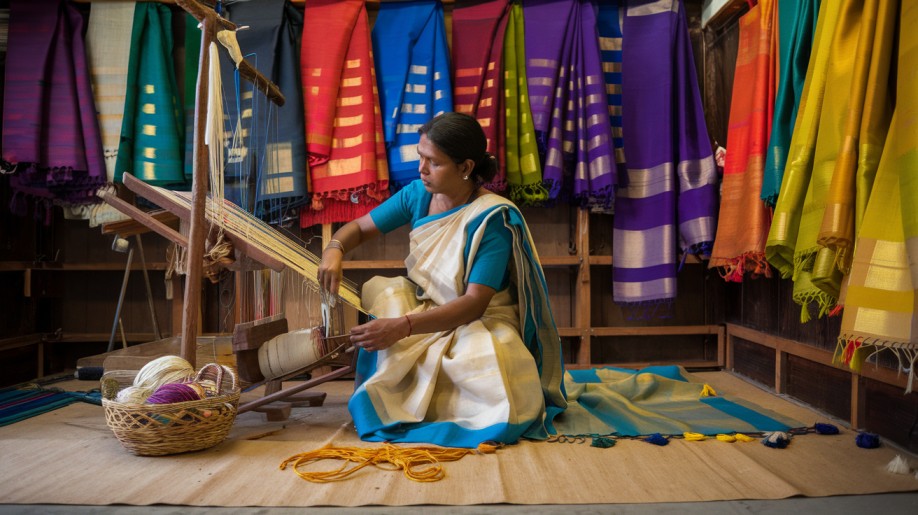Khandua Sarees Woven Heritage Empowering Women with Grace
In the vibrant tapestry of Indian textiles, Khandua sarees stand out for their magnificent beauty and the rich cultural heritage they represent. Originating from the Khandapara region of Odisha, these sarees are woven using conventional methods passed down through generations. Beyond their aesthetic appeal, Khandua sarees embody the spirit of empowerment for women artisans, providing them with financial independence and a platform for their creative expression.
The Legacy of Khandua Sarees: A Craft Rooted in Tradition
Khandua sarees, originating from the culturally rich town, have a legacy steeped in Odisha’s history. The artisans initially wove these sarees as offerings for Lord Jagannath, one of the principal deities in Odisha. Known for their exquisite tie-dye technique called “bandha,” the sarees display intricate motifs and sacred verses, embodying Odisha’s spiritual and artistic essence.
The uniqueness of Khandua lies in its dyeing and weaving process, which relies on patience, precision, and skill. Using natural dyes derived from ingredients like turmeric, indigo, and catechu, artisans create vibrant colors that define Khandua sarees. The intricate ikat patterns, achieved by a resist-dye technique, represent a blend of cultural symbolism and natural elements. These designs are a testament to the timeless beauty of handwoven textiles, preserving ancient methods while creating modern beauty.
Empowering Women Artisans: A Journey of Skill and Independence
Women have long played a critical role in the production of Khandua sarees, yet it wasn’t until recent years that they began receiving recognition for their invaluable contributions. Historically, weaving was often considered a male-dominated field. Today, however, women artisans are making their mark in the industry, utilizing traditional skills and a modern entrepreneurial spirit to expand their craft and create more sustainable livelihoods.
For many women, weaving Khandua sarees has transformed from a mere activity into a source of financial independence and social empowerment. Women artisans are now active participants in the supply chain, taking on roles from dyeing and weaving to quality control and even marketing. In regions with limited opportunities, weaving provides them a stable income, the means to support their families, and a respected position in their communities.
Innovation on the Loom: Blending Tradition with Modern Trends
The Khandua saree’s adaptability has played a significant role in its popularity and relevance in today’s fashion world. By experimenting with new colors, patterns, and silk and cotton blends, women artisans are helping Khandua sarees find a place in the contemporary wardrobe. They are creating sarees that appeal to traditional tastes and modern sensibilities, showcasing their adaptability and forward-thinking approaches.
With this adaptability, women artisans are not just keeping the Khandua tradition alive but are innovating within it, ensuring its relevance for future generations. Through collaborations with designers and support from digital marketplaces, these artisans can now reach global customers, increasing the scope of their work and their appreciation for their craft.
The Future of Khandua: A Hopeful Vision for Women Artisans
The future of Khandua sarees looks bright, largely thanks to the passion and perseverance of its women artisans. Their resilience and innovation pave the way for India’s more inclusive and prosperous textile industry. By valuing the contributions of these artisans and investing in their growth, we help preserve Odisha’s cultural heritage and support a sustainable future for handwoven textiles.
As Khandua sarees continue to inspire and empower, they remind us of the strength of preserving tradition while adapting to change. These sarees, woven with dedication and artistry, are more than just textiles – they are symbols of resilience, empowerment, and pride for the women who create them and those who wear them.

